| [1] |
FENG Wanmei, TANG Jie, ZHAO Nan, et al. NOMA-based UAV-aided networks for emergency communications[J]. China Communications, 2020, 17(11): 54–66. doi: 10.23919/JCC.2020.11.005
|
| [2] |
WANG Haichao, WANG Jinlong, CHEN Jin, et al. Network-connected UAV communications: Potentials and challenges[J]. China Communications, 2018, 15(12): 111–121. doi: 10.12676/j.cc.2018.12.009
|
| [3] |
GU Jiangchun, DING Guoru, XU Yitao, et al. Proactive optimization of transmission power and 3D trajectory in UAV-assisted relay systems with mobile ground users[J]. Chinese Journal of Aeronautics, 2021, 34(3): 129–144. doi: 10.1016/j.cja.2020.09.028
|
| [4] |
单琳锋, 金家才, 张珂. 电子对抗制胜机理[M]. 北京: 国防工业出版社, 2019.
|
| [5] |
MANOJ B S, CHAKRABORTY A, and SINGH R. Complex Networks: A Networking and Signal Processing Perspective[M]. Boston: Prentice Hall, 2018.
|
| [6] |
BAINGANA B and GIANNAKIS G B. Switched dynamic structural equation models for tracking social network topologies[C]. Proceedings of 2015 IEEE Global Conference on Signal and Information Processing (GlobalSIP), Orlando, USA, 2015: 682–686.
|
| [7] |
SILVA T C and ZHAO Liang. Machine Learning in Complex Networks[M]. New York: Springer, 2016.
|
| [8] |
BOCCALETTI S, LATORA V, MORENO Y, et al. Complex networks: Structure and dynamics[J]. Physics Reports, 2006, 424(4/5): 175–308. doi: 10.1016/j.physrep.2005.10.009
|
| [9] |
MATEOS G, SEGARRA S, MARQUES A G, et al. Connecting the dots: Identifying network structure via graph signal processing[J]. IEEE Signal Processing Magazine, 2019, 36(3): 16–43. doi: 10.1109/MSP.2018.2890143
|
| [10] |
ZHANG Zhang, ZHAO Yi, LIU Jing, et al. A general deep learning framework for network reconstruction and dynamics learning[J]. Applied Network Science, 2019, 4(1): 110. doi: 10.1007/s41109-019-0194-4
|
| [11] |
CIMINI G, MASTRANDREA R, and SQUARTINI T. Reconstructing Networks[M]. New York: Cambridge University Press, 2021.
|
| [12] |
KULLMANN L, KERTÉSZ J, and KASKI K. Time-dependent cross-correlations between different stock returns: A directed network of influence[J]. Physical Review E, 2002, 66(2): 026125. doi: 10.1103/PhysRevE.66.026125
|
| [13] |
ZHANG Zhaoyang, CHEN Yang, MI Yuanyuan, et al. Reconstruction of dynamic networks with time-delayed interactions in the presence of fast-varying noises[J]. Physical Review E, 2019, 99(4): 042311. doi: 10.1103/PhysRevE.99.042311
|
| [14] |
STETTER O, BATTAGLIA D, SORIANO J, et al. Model-free reconstruction of excitatory neuronal connectivity from calcium imaging signals[J]. PLoS Computational Biology, 2012, 8(8): e1002653. doi: 10.1371/journal.pcbi.1002653
|
| [15] |
RUNGE J, BATHIANY S, BOLLT E, et al. Inferring causation from time series in Earth system sciences[J]. Nature Communications, 2019, 10(1): 2553. doi: 10.1038/s41467-019-10105-3
|
| [16] |
WANG Wenxu, LAI Yingcheng, and GREBOGI C. Data based identification and prediction of nonlinear and complex dynamical systems[J]. Physics Reports, 2016, 644: 1–76. doi: 10.1016/j.physrep.2016.06.004
|
| [17] |
NITZAN M, CASADIEGO J, and TIMME M. Revealing physical interaction networks from statistics of collective dynamics[J]. Science Advances, 2017, 3(2): e1600396. doi: 10.1126/sciadv.1600396
|
| [18] |
BATTAGLIA P W, HAMRICK J B, BAPST V, et al. Relational inductive biases, deep learning, and graph networks[J/OL]. http://arxiv.org/abs/1806.01261, 2018.
|
| [19] |
ACHARYA H B and GOUDA M G. Brief announcement: The theory of network tracing[C]. Proceedings of the 28th ACM Symposium on Principles of Distributed Computing, Calgary, Canada, 2009: 318–319.
|
| [20] |
YIN Jiabin, LI Youmou, WANG Qi, et al. SNMP-based network topology discovery algorithm and implementation[C]. Proceedings of the 9th International Conference on Fuzzy Systems and Knowledge Discovery, Chongqing, China, 2012: 2241–2244.
|
| [21] |
GAO Yi, DONG Wei, CHEN Chun, et al. Accurate per-packet delay tomography in wireless Ad Hoc networks[J]. IEEE/ACM Transactions on Networking, 2017, 25(1): 480–491. doi: 10.1109/TNET.2016.2594188
|
| [22] |
NI Jian, XIE Haiyong, TATIKONDA S, et al. Efficient and dynamic routing topology inference from end-to-end measurements[J]. IEEE/ACM Transactions on Networking, 2010, 18(1): 123–135. doi: 10.1109/TNET.2009.2022538
|
| [23] |
ERIKSSON B, DASARATHY G, BARFORD P, et al. Efficient network tomography for Internet topology discovery[J]. IEEE/ACM Transactions on Networking, 2012, 20(3): 931–943. doi: 10.1109/TNET.2011.2175747
|
| [24] |
COATES M, RABBAT M, and NOWAK R. Merging logical topologies using end-to-end measurements[C]. Proceedings of the 3rd ACM SIGCOMM Conference on Internet Measurement, Miami Beach, USA, 2003: 192–203.
|
| [25] |
LIANG Yao and LIU Rui. Routing topology inference for wireless sensor networks[J]. ACM SIGCOMM Computer Communication Review, 2013, 43(2): 21–28. doi: 10.1145/2479957.2479961
|
| [26] |
PARTRIDGE C, COUSINS D, JACKSON A W, et al. Using signal processing to analyze wireless data traffic[C]. Proceedings of the 1st ACM Workshop on Wireless Security, Atlanta, USA, 2002: 67–76.
|
| [27] |
TILGHMAN P and ROSENBLUTH D. Inferring wireless communications links and network topology from externals using Granger causality[C]. Proceedings of the IEEE Military Communications Conference, San Diego, USA, 2013: 1284–1289.
|
| [28] |
MOORE M G and DAVENPORT M A. A Hawkes’ eye view of network information flow[C]. Proceedings of 2016 IEEE Statistical Signal Processing Workshop, Palma de Mallorca, Spain, 2016: 1–5.
|
| [29] |
MOORE M G and DAVENPORT M A. Analysis of wireless networks using Hawkes processes[C]. Proceedings of the 17th International Workshop on Signal Processing Advances in Wireless Communications (SPAWC), Edinburgh, UK, 2016: 1–5.
|
| [30] |
LAGHATE M and CABRIC D. Learning wireless networks’ topologies using asymmetric Granger causality[J]. IEEE Journal of Selected Topics in Signal Processing, 2018, 12(1): 233–247. doi: 10.1109/JSTSP.2017.2787478
|
| [31] |
SHARMA P, BUCCI D J, BRAHMA S K, et al. Communication network topology inference via transfer entropy[J]. IEEE Transactions on Network Science and Engineering, 2020, 7(1): 562–575. doi: 10.1109/TNSE.2018.2889454
|
| [32] |
TESTI E, FAVARELLI E, PUCCI L, et al. Machine learning for wireless network topology inference[C]. Proceedings of the 13th International Conference on Signal Processing and Communication Systems, Gold Coast, Australia, 2019: 1–7.
|
| [33] |
TESTI E and GIORGETTI A. Blind wireless network topology inference[J]. IEEE Transactions on Communications, 2021, 69(2): 1109–1120. doi: 10.1109/TCOMM.2020.3036058
|
| [34] |
杨红娃, 潘高峰, 王巍. 战场干线网拓扑推断技术[J]. 通信对抗, 2009(3): 14–17,26.YANG Hongwa, PAN Gaofeng, and WANG Wei. Topology extrapolation method of battlefield backbone networks[J]. Communication Countermeasures, 2009(3): 14–17,26.
|
| [35] |
NIU Zhao, LI Qiang, MA Tao, et al. Research on non-cooperative topology inference method based on node location information[C]. Proceedings of the 18th International Conference on Communication Technology, Chongqing, China, 2018: 271–275.
|
| [36] |
NIU Zhao, MA Tao, SHU Nina, et al. Interference sources localization and communication relationship inference with cognitive radio IoT networks[J]. IEEE Access, 2020, 8: 103062–103072. doi: 10.1109/ACCESS.2020.2998730
|
| [37] |
李盛祥, 刘广怡, 陈迎春, 等. 基于帧间隔的CSMA/CA无线网络拓扑推断技术[J]. 信息工程大学学报, 2019, 20(2): 161–167,179. doi: 10.3969/j.issn.1671-0673.2019.02.006LI Shengxiang, LIU Guangyi, CHEN Yingchun, et al. Inter frame space based topology inference for CSMA/CA wireless network[J]. Journal of Information Engineering University, 2019, 20(2): 161–167,179. doi: 10.3969/j.issn.1671-0673.2019.02.006
|
| [38] |
唐建强, 李昊, 杨南. 一种基于CSMA/CA协议的无线自组织网络拓扑推断方法[J]. 电子信息对抗技术, 2020, 35(3): 46–49. doi: 10.3969/j.issn.1674-2230.2020.03.009TANG Jianqiang, LI Hao, and YANG Nan. A topology extrapolation method of wireless Ad Hoc network based on CSMA/CA protocol[J]. Electronic Information Warfare Technology, 2020, 35(3): 46–49. doi: 10.3969/j.issn.1674-2230.2020.03.009
|
| [39] |
梁爽. 基于复杂网络理论的非合作信息网络分析[D]. [硕士论文], 电子科技大学, 2019.LIANG Shuang. Analysis of non-cooperative information network based on complex network theory[D]. [Master dissertation], University of Electronic Science and Technology of China, 2019.
|
| [40] |
LIU Changkun, WU Xinrong, YAO Changhua, et al. Discovery and research of communication relation based on communication rules of ultrashort wave radio station[C]. Proceedings of the 4th International Conference on Big Data Analytics (ICBDA), Suzhou, China, 2019: 112–117.
|
| [41] |
LIU Changkun, WU Xinrong, ZHU Lei, et al. The communication relationship discovery based on the spectrum monitoring data by improved DBSCAN[J]. IEEE Access, 2019, 7: 121793–121804. doi: 10.1109/ACCESS.2019.2938296
|
| [42] |
LIU Changkun, WU Xinrong, ZHU Lei, et al. Research on communication network structure mining based on spectrum monitoring data[J]. IEEE Access, 2019, 8: 3945–3959. doi: 10.1109/ACCESS.2019.2952059
|
| [43] |
邵豪, 王伦文. 基于压缩感知的无线通信网拓扑推断方法[J]. 探测与控制学报, 2020, 42(2): 92–98.SHAO Hao and WANG Lunwen. Topology inference method for wireless communication networks based on compressed sensing[J]. Journal of Detection &Control, 2020, 42(2): 92–98.
|
| [44] |
祝晟玮. 基于截获信号分析的通信网多节点信息获取研究[D]. [硕士论文], 电子科技大学, 2020.ZHU Shengwei. Research of multi-node information acquisition in communication network based on interception signal analysis[D]. [Master dissertation], University of Electronic Science and Technology of China, 2020.
|
| [45] |
LIU Zitong, SUN Jiachen, SHEN Feng, et al. Topology sensing of wireless networks based on Hawkes process[J]. Mobile Networks and Applications, 2020, 25(6): 2459–2470. doi: 10.1007/s11036-020-01588-2
|
| [46] |
LIU Zitong, DING Guoru, WANG Zheng, et al. Cooperative topology sensing of wireless networks with distributed sensors[J]. IEEE Transactions on Cognitive Communications and Networking, 2021, 7(2): 524–540. doi: 10.1109/TCCN.2020.3019601
|
| [47] |
SONG Yehui, SUN Jiachen, and DING Guoru. Fast topology inference of wireless networks based on Hawkes process[C]. Proceedings of the 13th EAI International Conference on Mobile Multimedia Communications, Harbin, China, 2020: 398–408.
|
| [48] |
SONG Yehui, DING Guoru, SUN Jiachen, et al. Topology tracking of dynamic UAV wireless networks[J/OL]. Chinese Journal of Aeronautics, 2021.
|
| [49] |
刘子彤, 丁国如, 王威, 等. 面向非合作无线网络的拓扑感知技术分析[J]. 指挥与控制学报, 2021, 7(2): 153–159. doi: 10.3969/j.issn.2096-0204.2021.02.0153LIU Zitong, DING Guoru, WANG Wei, et al. Analysis of topology sensing technology for non-collaborative wireless networks[J]. Journal of Command and Control, 2021, 7(2): 153–159. doi: 10.3969/j.issn.2096-0204.2021.02.0153
|
| [50] |
PENG Linning, ZHANG Junqing, LIU Ming, et al. Deep learning based RF fingerprint identification using differential constellation trace figure[J]. IEEE Transactions on Vehicular Technology, 2020, 69(1): 1091–1095. doi: 10.1109/TVT.2019.2950670
|
| [51] |
HALDER S and GHOSAL A. A survey on mobility-assisted localization techniques in wireless sensor networks[J]. Journal of Network and Computer Applications, 2016, 60: 82–94. doi: 10.1016/j.jnca.2015.11.019
|
| [52] |
NURMINEN H, DASHTI M, and PICHÉ R. A survey on wireless transmitter localization using signal strength measurements[J]. Wireless Communications and Mobile Computing, 2017, 2017: 2569645. doi: 10.1155/2017/2569645
|
| [53] |
贾可新. 通信侦察中的信号分选算法研究[D]. [博士论文], 电子科技大学, 2011.JIA Kexin. Research on signal sorting algorithm for communication reconnaissance[D]. [Ph. D. dissertation], University of Electronic Science and Technology of China, 2011.
|
| [54] |
MEI Tiemin and MERTINS A. Convolutive blind source separation based on disjointness maximization of subband signals[J]. IEEE Signal Processing Letters, 2008, 15: 725–728. doi: 10.1109/LSP.2008.2001114
|
| [55] |
SCHMIDT R. Multiple emitter location and signal parameter estimation[J]. IEEE Transactions on Antennas and Propagation, 1986, 34(3): 276–280. doi: 10.1109/TAP.1986.1143830
|
| [56] |
HAN J W, KAMBER M A, and PEI J. Data Mining: Concepts and Techniques[M]. 2nd ed. New York: Morgan Kaufmann, 2006.
|
| [57] |
IEEE. IEEE 802.11-2020 IEEE standard for information technology–Telecommunications and information exchange between Systems - Local and metropolitan area networks–Specific requirements - Part 11: Wireless LAN medium access control (MAC) and physical layer (PHY) specifications[S]. IEEE, 2021: 1–7524.
|
| [58] |
SCHREIBER T. Measuring information transfer[J]. Physical Review Letters, 2000, 85(2): 461–464. doi: 10.1103/PhysRevLett.85.461
|
| [59] |
SHANNON C E. A mathematical theory of communication[J]. The Bell System Technical Journal, 1948, 27(3): 379–423. doi: 10.1002/j.1538-7305.1948.tb01338.x
|
| [60] |
WIENER N. The theory of prediction[M]. BECKENBACH F F. Modern Mathematics for Engineer. New York: McGraw-Hill, 1956.
|
| [61] |
HAWKES A G. Spectra of some self-exciting and mutually exciting point processes[J]. Biometrika, 1971, 58(1): 83–90. doi: 10.1093/biomet/58.1.83
|





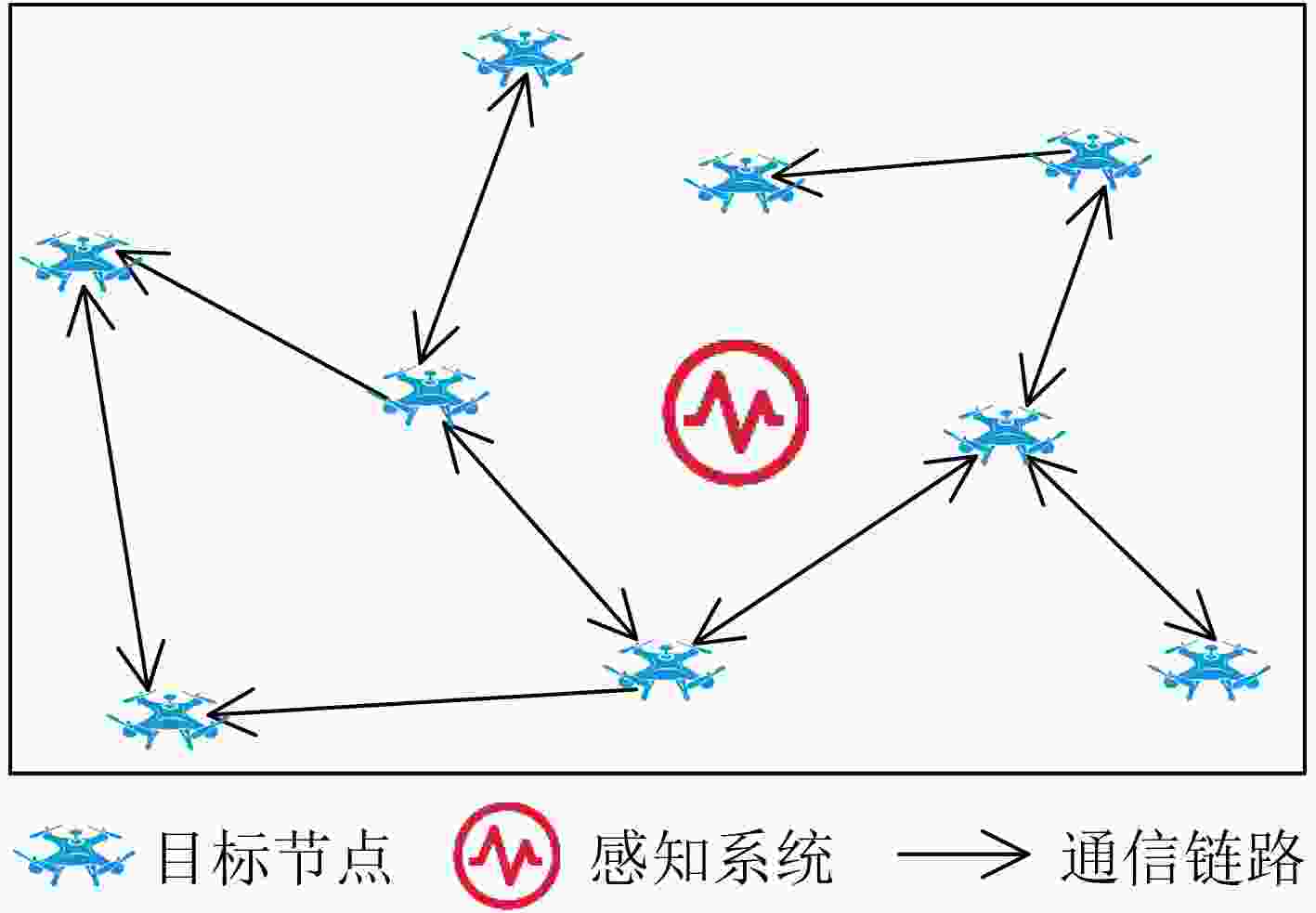
 下载:
下载:


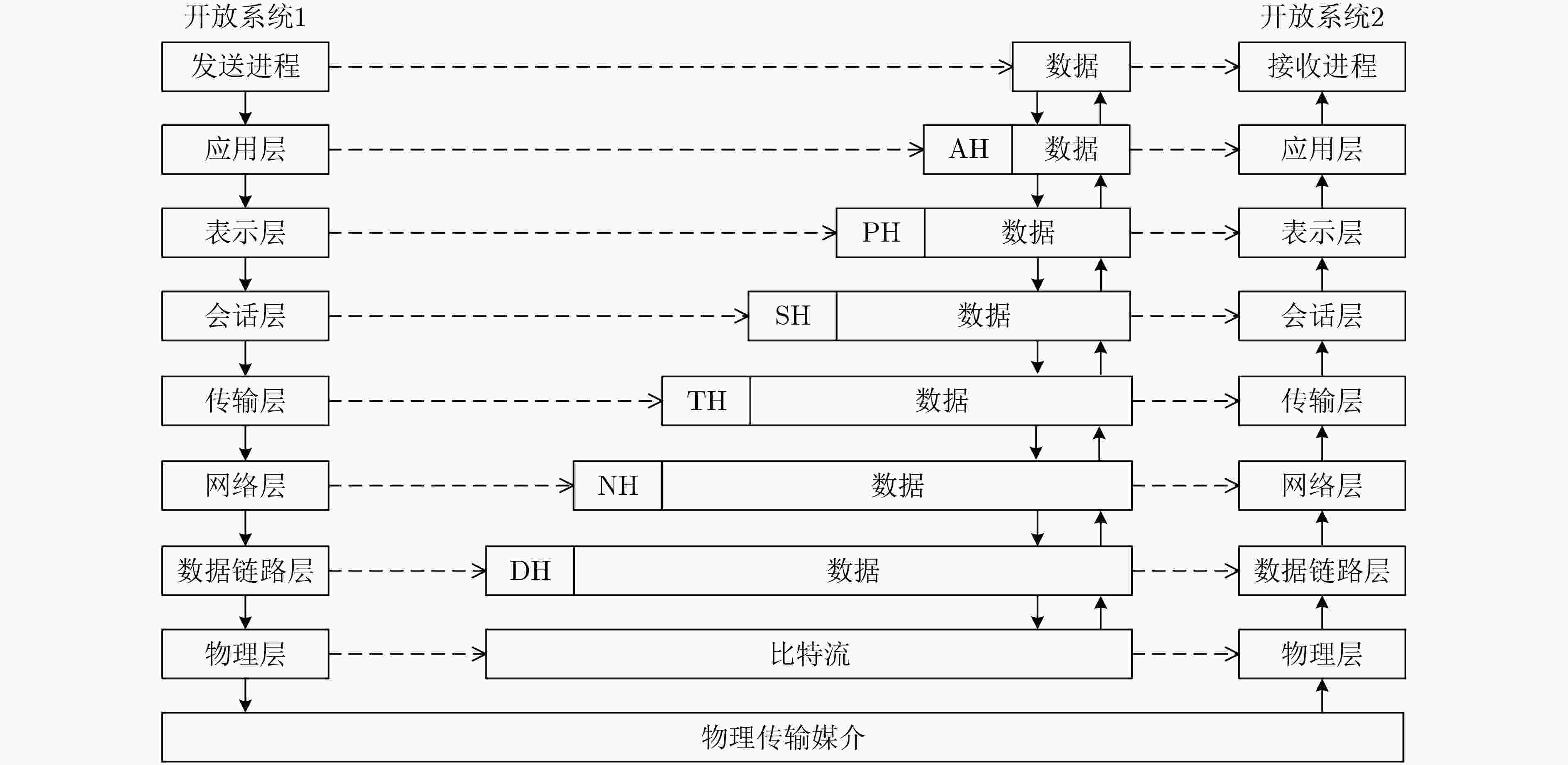

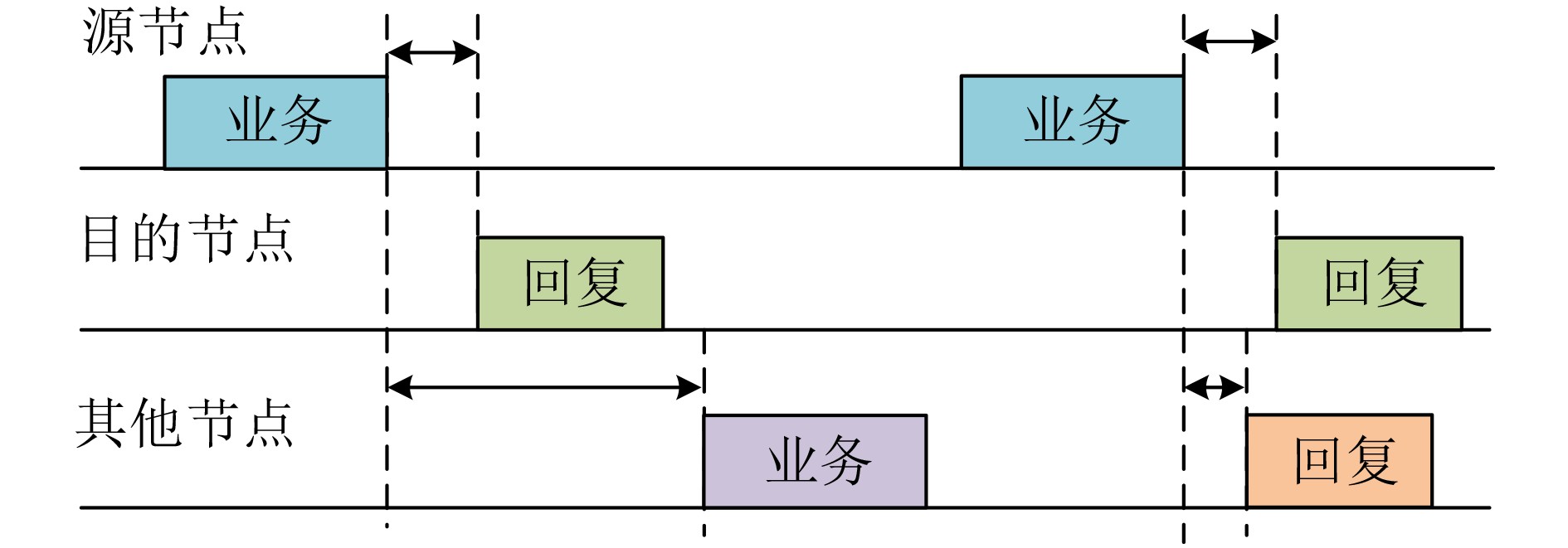

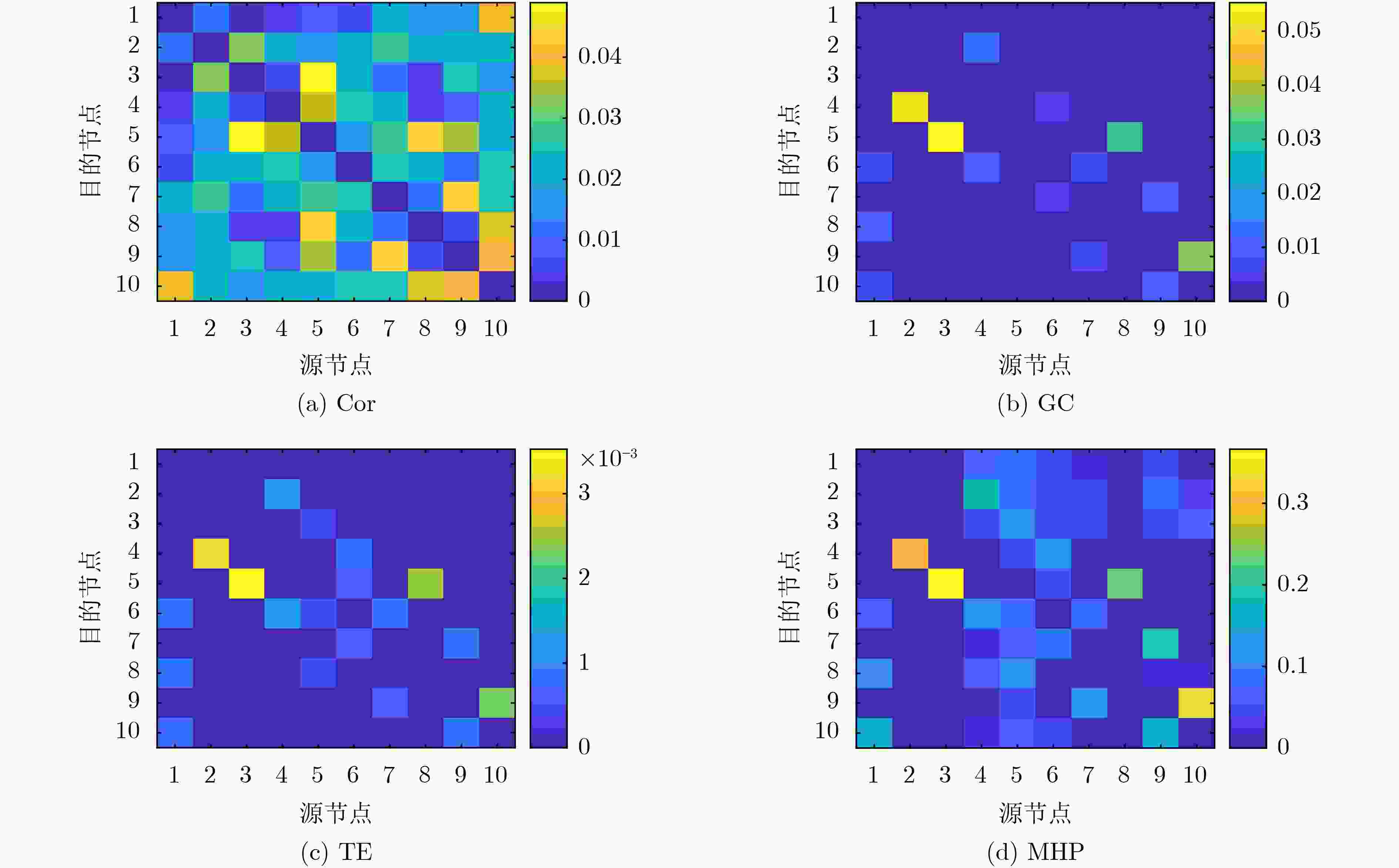
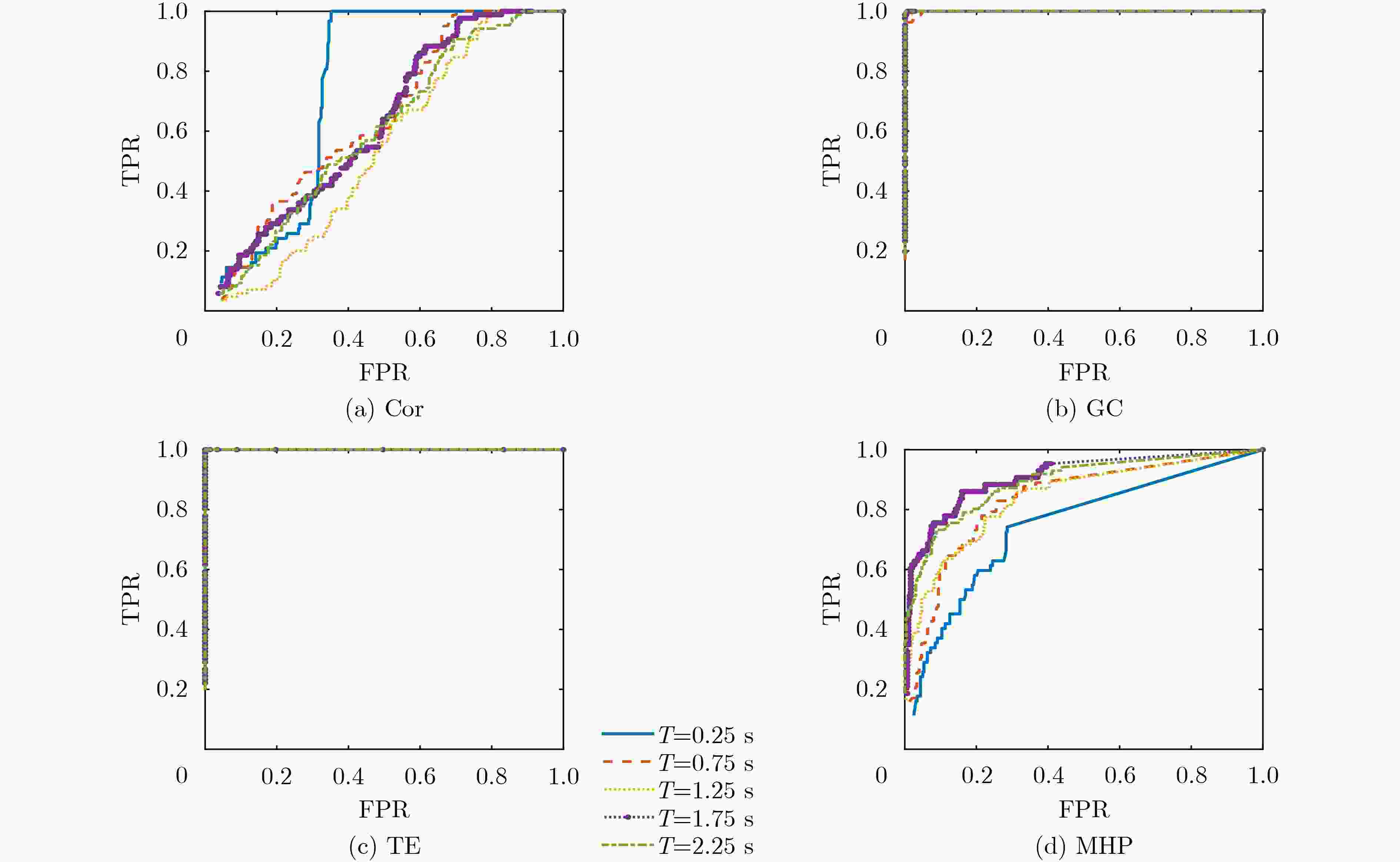

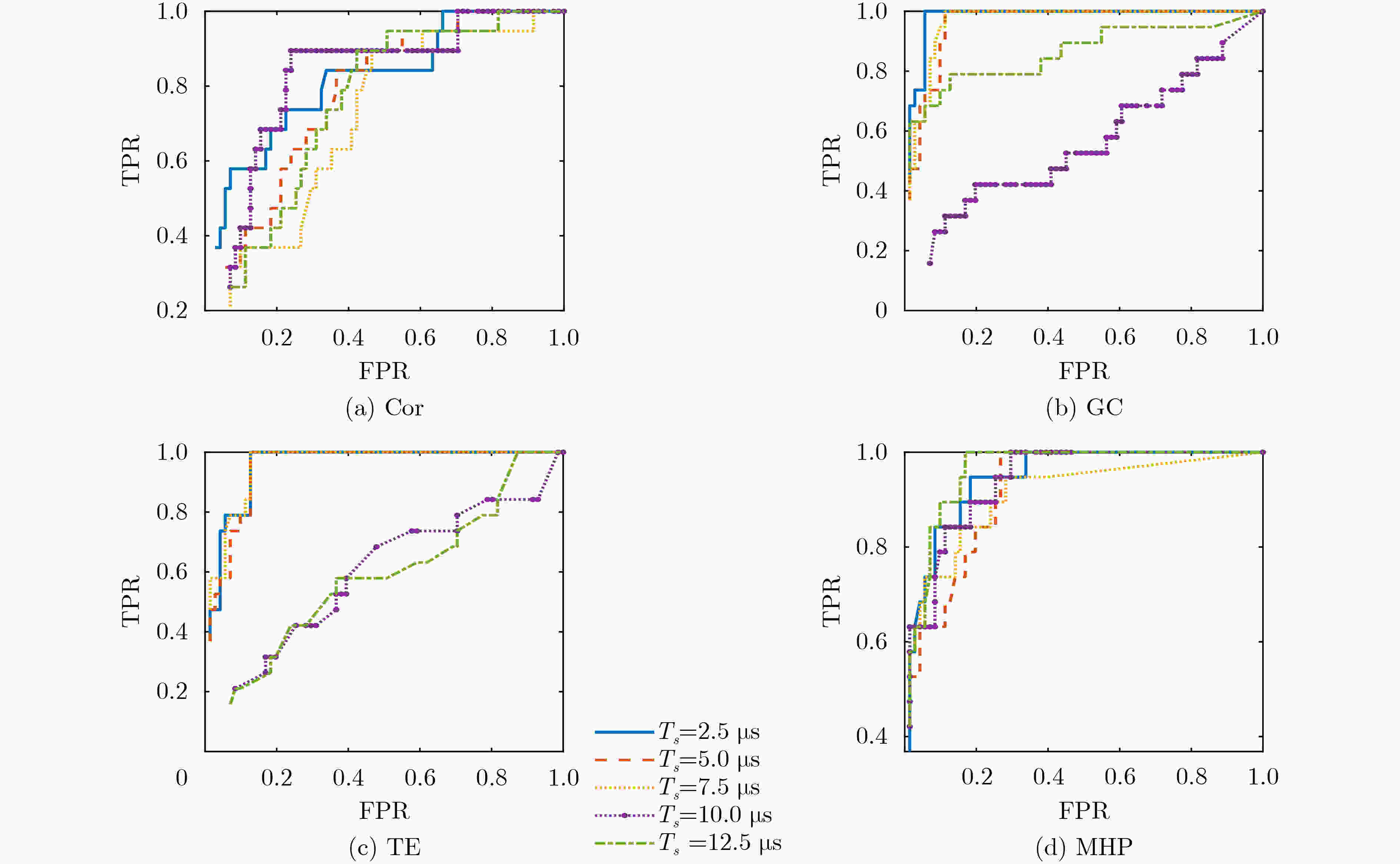
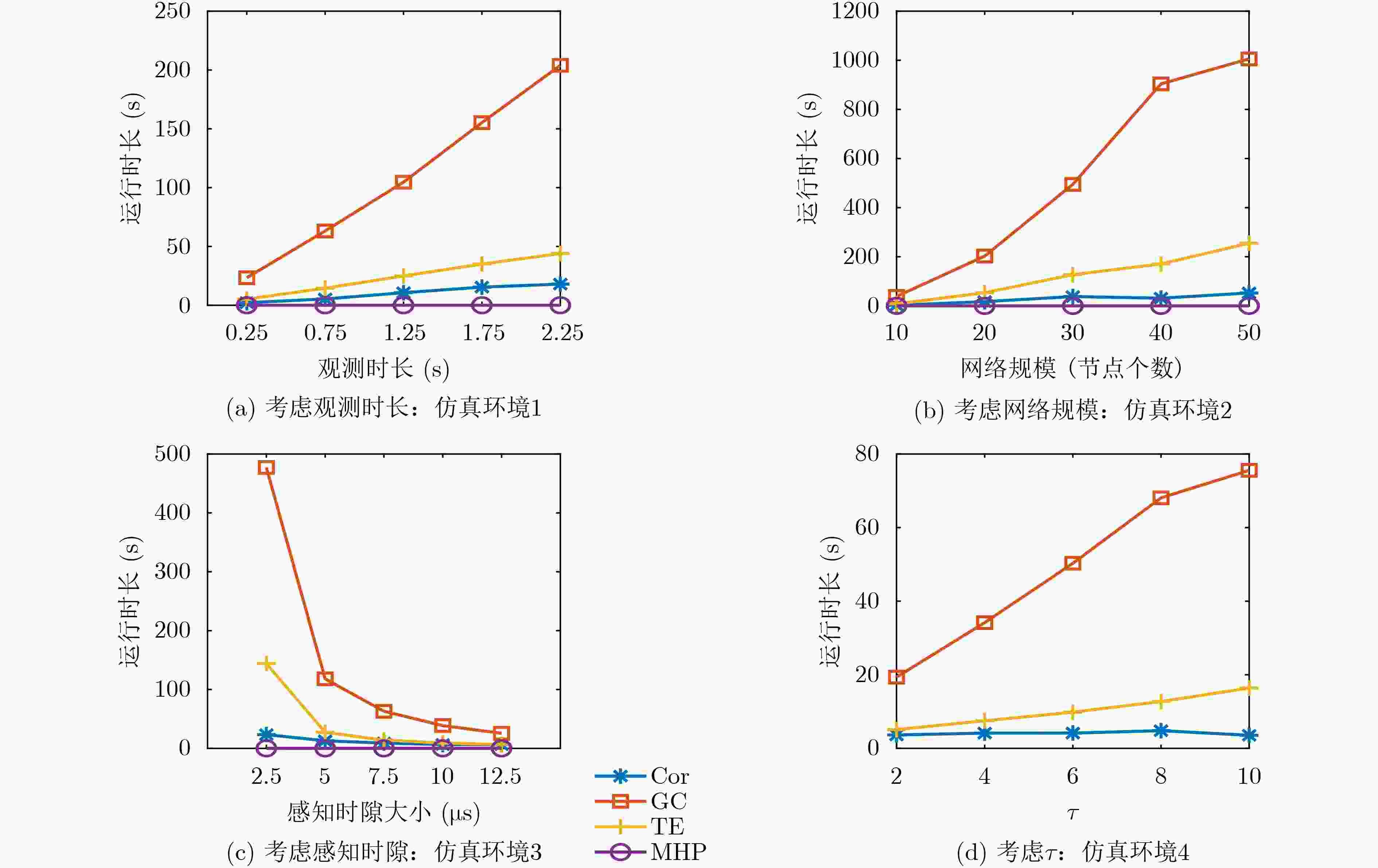


 下载:
下载:
